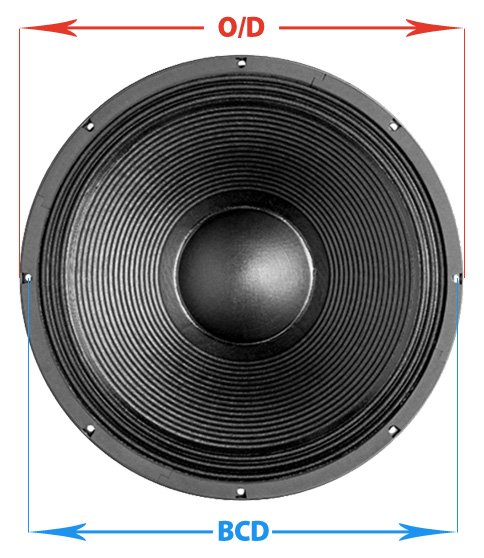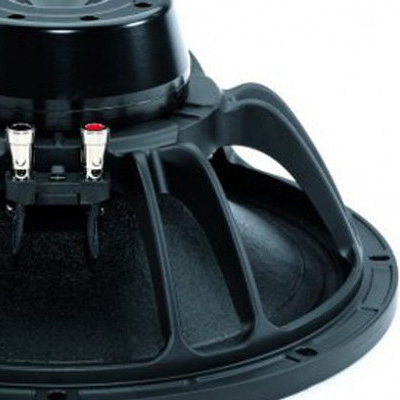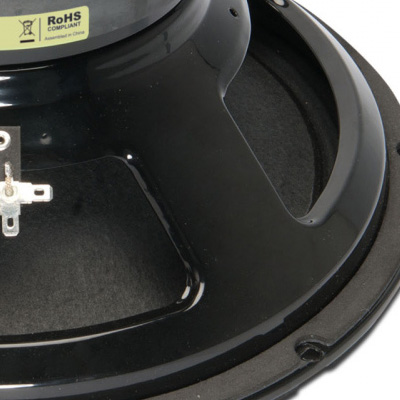First step is to determine the size of the woofer. Woofers are generally grouped by nominal overall diameter, which is easy enough to measure. You just measure edge to edge of the outside of the chassis, and round down to the nearest inch. This works for most sizes, except around 5″-6″ where some manufacturers will state 5.25″ or 6.5″ rather than rounding off to the nearest inch. The speaker below has an outside diameter of 460mm, which is 18.1 inches – and for purposes of selecting a replacement, we consider this to be an 18″ woofer. When it comes to fitting a replacement with minimal hassle, a second measurement is also quite critical, the bolt circle diameter, or BCD. Whilst this tends to be fairly standard, it can vary by a few millimetres, particularly between pressed steel and cast alloy chassis, and can vary enough for the bolt holes to not line up. If you bolt holes don’t line up, replacing the driver ends up being a lot more work. The BCD is measured from the middle of the hole on one side to the middle of the hole on the opposite side, and ideally you want the BCD to be within around 2-3mm to avoid issues with fitment of the driver. Most manufacturers tend to follow a similar bolt pattern, but over the years one or two manufacturers have opted for non-standard bolt hole configurations, so this is well worth checking to save yourself a lot of hassle.

Thankfully most cast alloy chassis tend to have similar BCD, as do most pressed steel chassis. So the times you are most likely to encounter issues would be if you try to replace a pressed steel chassis driver with a cast alloy driver, or vice versa. The two different type of chassis are easy to distinguish, pressed steel chassis are generally sheet steel of around 1-2mm thickness that has been pressed into shape. Cast alloy chassis are thicker, sometimes 3-4mm or more around the edge of the driver, and thicker on the legs. For purposes of doing a drop in replacement, its generally much simpler to stick with the same type of chassis, as you have a much higher chance of everything lining up nicely with no modifications required.
 |
 |
We’re nearly done on dimensions, a couple of final things to check are the hole cut-out size, and the overall depth. You are most likely to have issues with the hole cut out size if you switch from cast alloy chassis to pressed steel chassis, as the hole cutout (the hole in the cabinet) can vary by 3-5mm. If you upgrade from a pressed steel chassis to a cast alloy chassis, there is a good chance the hole cutout might be a little bit too small, and you may need to enlarge it. The other way around, from cast alloy to pressed steel may present bigger issues, as the hole may be too big, not leaving sufficient material around the driver for mounting screws. Most manufacturers specify the baffle cutout diameter in their specifications, so this is relatively easy to check.

The overall depth often isn’t something you need to worry about , however, if you are looking for a woofer for front loaded horn, rear loaded horn (scoop) or a bandpass design you may find the cabinet has been designed to accommodate a specific driver, and if you are upgrading to a modern driver, particularly a long excursion neodymium magnet woofer – its quite possible the magnet may be too long to fit the space – so please check the depth before committing to a purchase. If you are looking for drivers for specialist applications, this needs a lot more research than a standard design.
Once you have BCD, and baffle cut-out sizes, you can move on to the next stage: https://blog.bluearan.co.uk/selecting-a-replacement-speaker-part-2-power-handling-and-impedance/